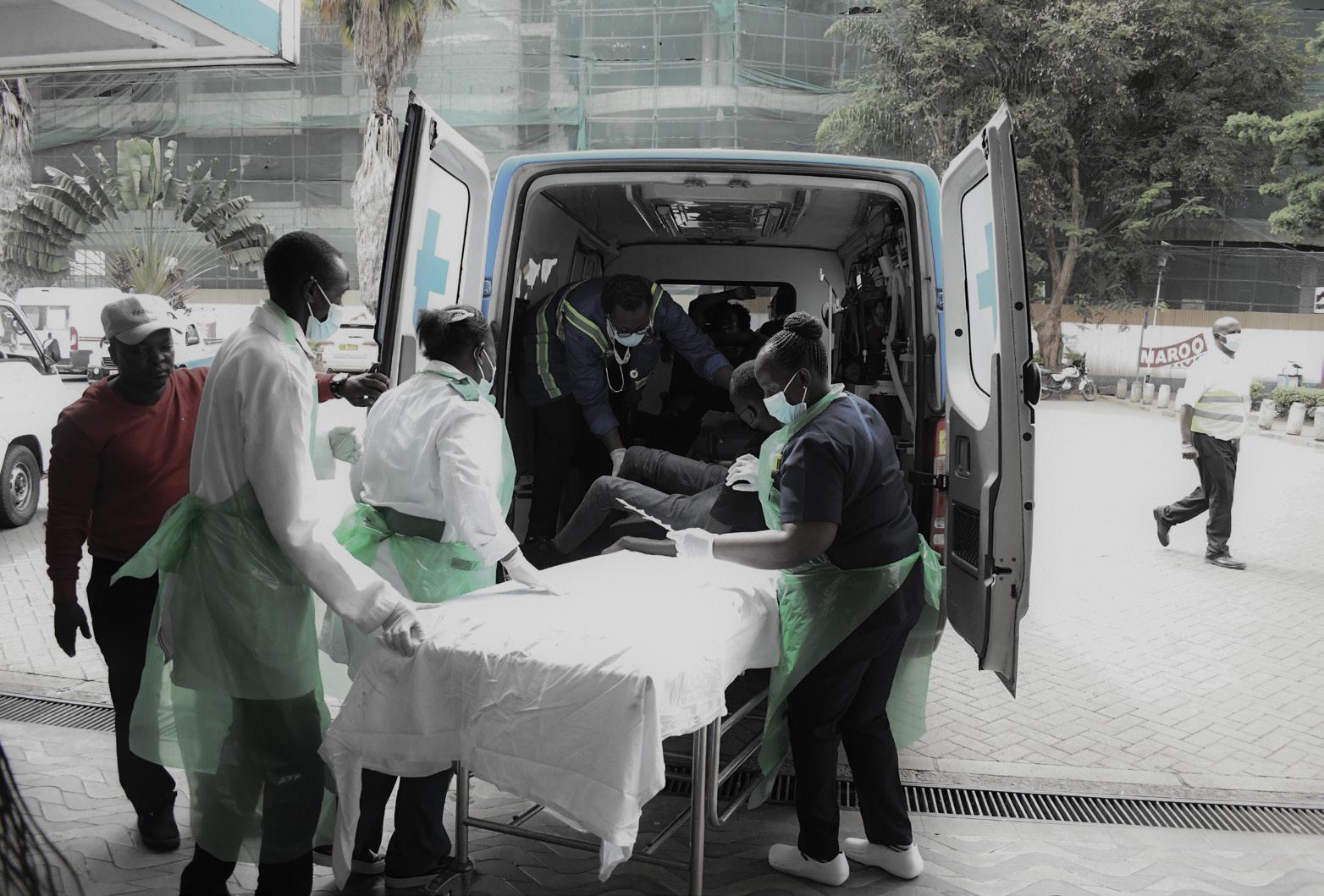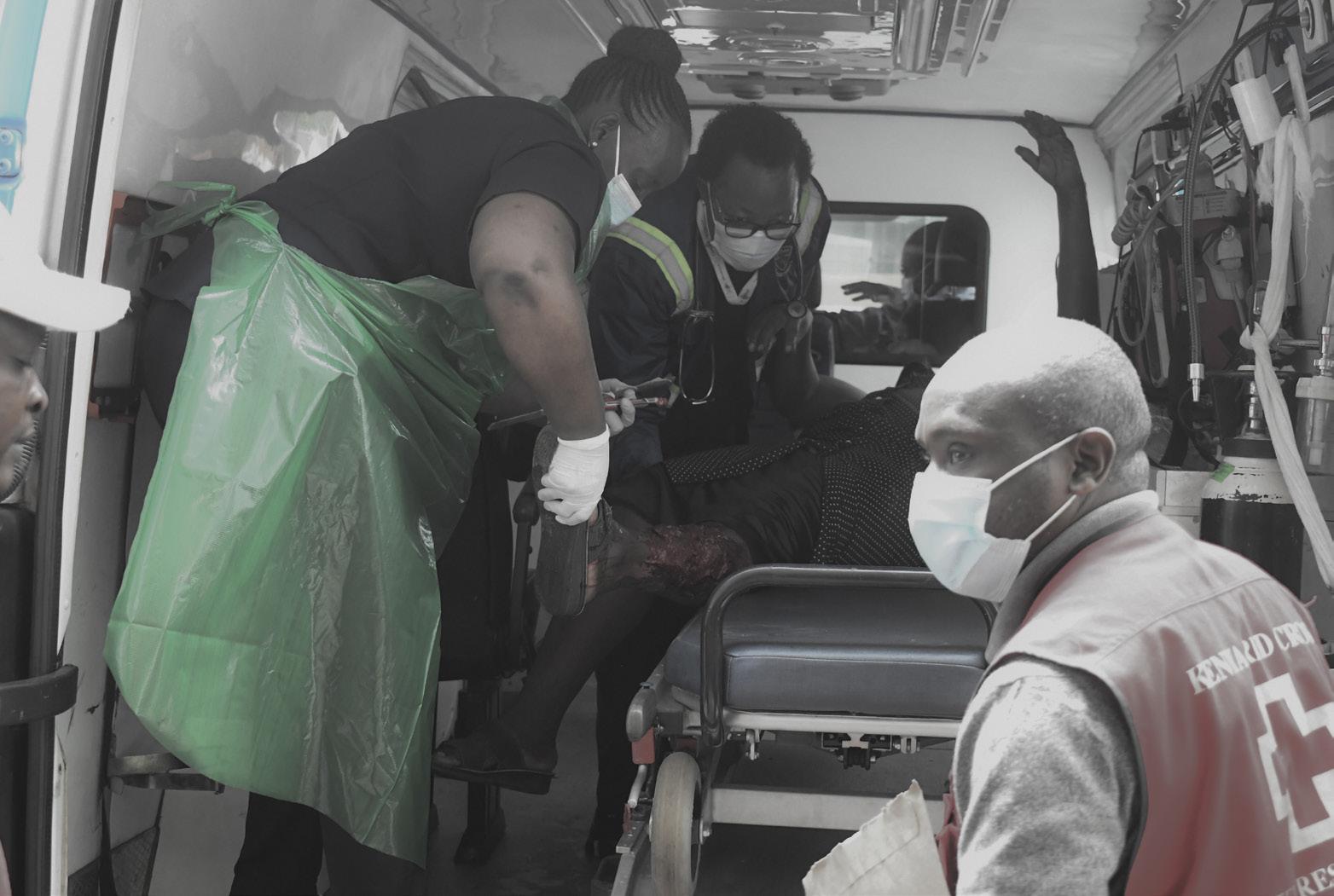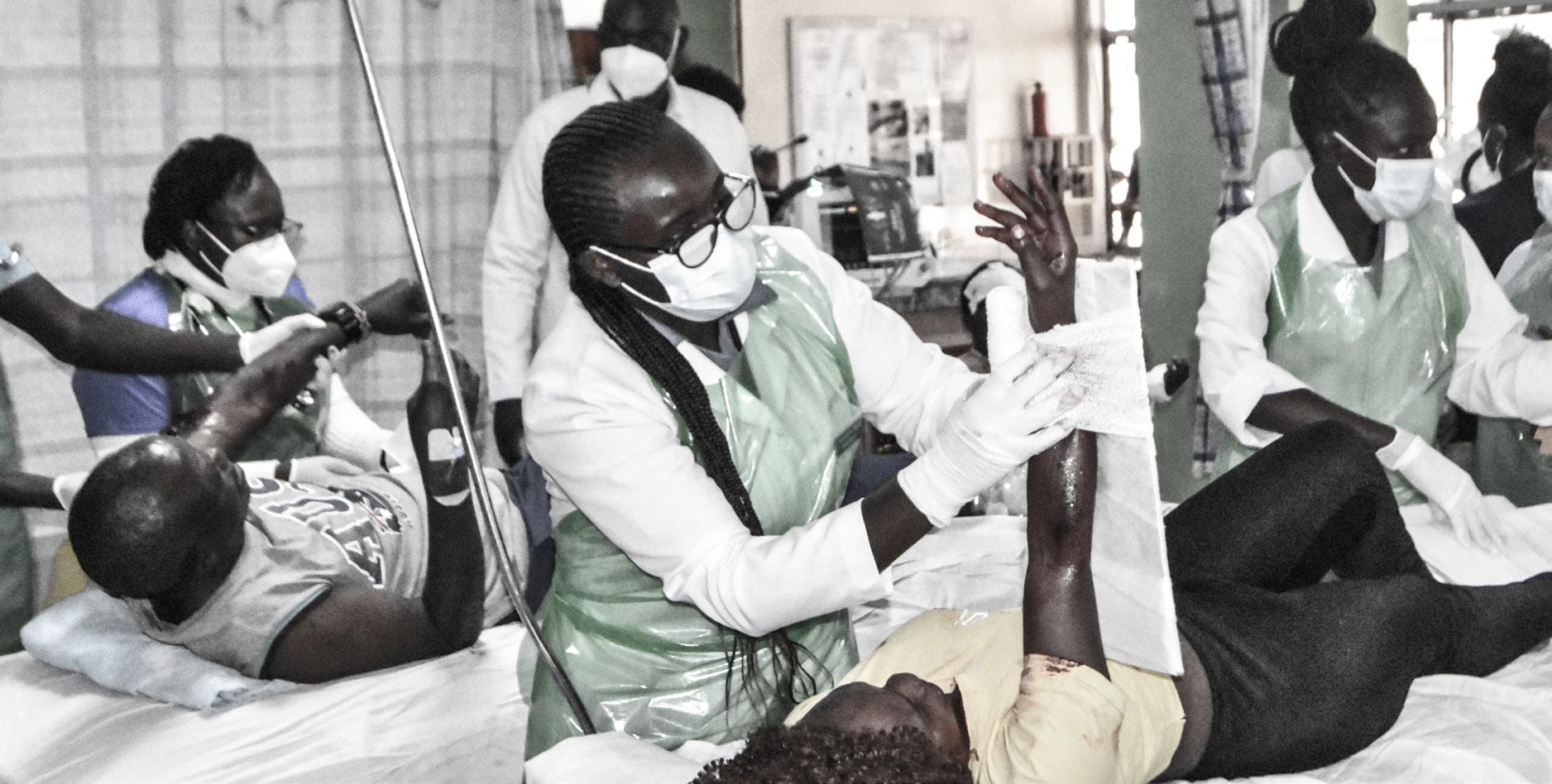
5 minute read
History Check
History Check
In times of crisis, KNH’s ER’s response has never wavered, pointing advances in patient care at the hospital
Advertisement
By Philip Etyang
Globally, hospitals contend with disasters and crises of national importance from time-to-time.
Since inception, Kenyatta National Hospital (KNH) through its various organs such as the Disaster Management Unit at (KNH) and the Accident and Emergency Department have been on the frontline in mitigating the effects of disasters through Disaster Risk Management practices.
The hospital has also been one of the main responders in the unfortunate incidences of disasters over the years.
According to the World Health Organization (WHO), health care facilities can be affected by several disasters such as natural phenomena like earthquakes, hurricanes, landslides, volcanic eruptions and floods. They can also be damaged by anthropogenic (that is man-made) events such as fires, gas leaks or explosions.
The hospital’s capacity in handling mass disasters was put to the test on the 7th of August, 1998 following a terrorist attack in Nairobi.
The twin attacks took place at the United States Embassy in Nairobi grounds, neighboring Ufundi and Co-operative Bank buildings. The second blast took place at the United States Embassy in Dar es Salaam, Tanzania (almost simultaneously), claiming the lives of 213 people in Nairobi and 11 in the Dar es Salaam attack.
Records indicate that over 5,000 people in Nairobi alone were injured in the twin attacks. Tanzanian authorities capped the number of those injured at 85.
KNH Accident and Emergency Department received 1,471 people out of the 5,000 who were injured, with 1,134 being attended to on the day of the bomb blast. 54.5 % (801) were male, while 45.5 % accounting for 669, were female. This number accounted for 43.92% while the remaining 56% received treatment in different health facilities in Nairobi. KNH therefore, handled majority of the cases, making it the first option for most people when it comes to health care treatment. 71.6 % of this number were between the age of 20 and 40. Hospital records further indicate that 646 of those injured received treatment at KNH’s Accident and Emergency Department within the first 24 hours following the blast. The remaining 825 during the screening and reconstruction period.
The then Deputy Director (Clinical Services) Dr. C.J Omondi commended the KNH medical staff for their efforts at saving life following the blast.
“For the medical staff, the situation was challenging. They had to move fast. They carried victims stained with blood through the crowds past charred and mutilated
“For the medical staff, the situation was challenging. They had to move fast. They carried victims stained with blood through the crowds past charred and mutilated bodies. They went past crying victims on the floor. They hurried to identify the most injured,” Dr. C. J Omondi bodies. They went past crying victims on the floor. They hurried to identify the most injured,” he said.
On his part, Dr Augustine Muita, the then KNH Director, expressed his gratitude at the various humanitarian assistance offered to the victims of the blast. Donations in form of food, medical and other supplies was received from ordinary people, businessmen and foreign governments as well as many other organizations.
It was a genuine collaborative effort in the service to alleviate human suffering. “Beyond the call of duty was the urge to serve humanity which was shown by all,” he said.
The African Medical News, a health care publication reported in September 1998 that “For the first time Kenyans were grateful that the country has a health facility of KNH’s caliber.”
The National Policy on Disaster Management defines disaster as a serious disruption of the functioning of a community or society causing widespread human, material, economic or environmental loses which exceed the ability of the affected community/society to cope using its own resources. It was therefore, crucial that everyone came together to help alleviate the effects of the terrorist attack.
The policy governs the way in which the National Disaster Management Unit operates as it seeks to meet its mandate of effectively preparing for and responding to emergencies, managing recovery and mitigation efforts in Kenya, in collaboration with stakeholders, KNH’s Disaster Management Unit being one of its stakeholders.
The unit was established through a Presidential Directive in August, 2013 as an effective and competent disaster management unit with an established command structure, budget and Standard Operating Procedures (SOPs) based on best practices.
Since the bomb blast tragedy, the hospital has handled several other major disasters which include the Tsavo-Voi Train tragedy of 24th March 1999 where 31 patients were attended to. The 31st of March 2000, Kericho-Nakuru highway accident involving an Akamba bus and Shaggy buses where 25 patients were treated. The Athi-River Train Fire Tragedy of 20th August 2000 saw KNH attend to 37 patients.
Following the accident, the then KNH Director, Dr H.W. Waweru appreciated the damaging effects of burn wounds that affected most people following the accident. “This was a disaster like none we have handled before mainly because burns present a peculiar problem, not only are burn wounds agonizingly painful, they also take long to heal. Even after the critical healing, a survivor’s skin is disfigured by constructures, which require specialized surgery if they are to heal properly,” he said.
Other major disasters that KNH has had to deal with include the Alcohol poisoning Tragedy (Kumi Kumi) of 15th November 2000 where 509 patients were treated at its facility. The Kyanguli Secondary School Fire Tragedy of 27th March 2001 is yet another disaster where 15 patients were attended to at KNH.

An injured patient is carried out of an Ambulance by Medical personnel after being rushed to KNH
PHOTO | NICHOLAS WAMALWA
- The African Medical News, September 1998.

Medical Personnel at KNH Accidents & Emergency attend to criticaly injured patients after a disaster
PHOTO | NICHOLAS WAMALWA
MAIN PHOTO | NICHOLAS WAMALWA Medical personnel receiving injured patients at the KNH Accidents & Emergency after a disaster







